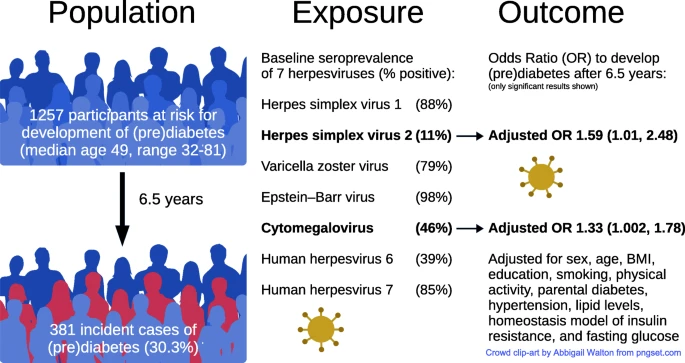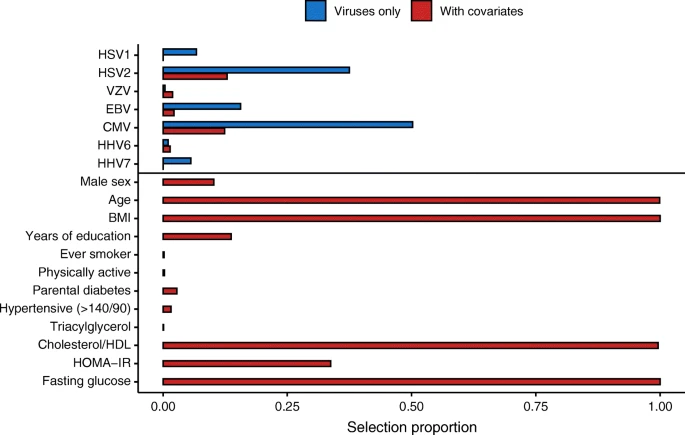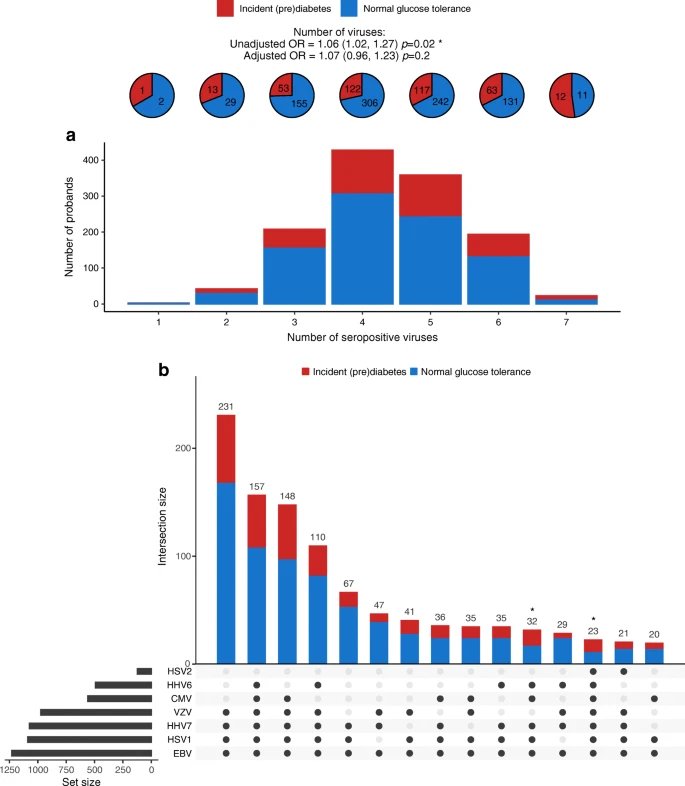A new study published in diabetes (Journal of European Diabetes Research Association [easd] on May 11, 2022 found that two common herpes viruses may cause impaired glucose metabolism in infected people and increase the risk of type 2 diabetes mellitus (T2D). The study was conducted by Dr. Tim woelfle of Ludwig Maximilian University (LMU) in Germany and Helmholtz in Munich and his colleagues.

Herpesvirus is one of the most common viruses in human beings. At present, there are eight recognized types: herpes simplex virus (HSV) 1 and 2, varicella zoster virus (VZV), Epstein Barr virus (EBV), cytomegalovirus (CMV) and human herpesvirus (HHV) 6, 7 and 8. All these viruses cause a lifelong latent infection in the host after the initial, usually mild or asymptomatic primary infection.
Type 2 diabetes is one of the most widespread and important metabolic diseases. By 2019, it is estimated that 9.3% of the world's population will suffer from this disease, mainly due to the resulting cardiovascular diseases, which cause high mortality burden. There are many known behavioral, environmental and genetic risk factors for T2D, but until recently, the virus was considered to play a role in the development of type 1 diabetes, because in type 1 diabetes, the pancreas stops producing enough insulin.
When a person shows impaired fasting glucose (IFG) or impaired glucose tolerance (IGT), it can be diagnosed as pre diabetes. Previous studies have found that the T2D incidence rate of patients with pre diabetes mellitus (7.6% per person per year) is much higher than that of patients with normal glucose tolerance (0.6% per person per year).
This study is based on the health data of 1967 subjects in the population health research platform of KORA (Augsburg cooperative health research) in southern Germany. Participants underwent detailed health examinations at baseline (2006-2008) and follow-up (2013-2014), including detection of the presence of human herpesvirus, oral glucose tolerance test (OGTT) and measurement of glycosylated hemoglobin (HbA1c) (measuring blood glucose control levels in the past 3 months).
The median age of the study group at baseline was 54 years, 962 (49%) were men and 999 (51%) were women. The incidence rate of (prophase) diabetes was analyzed using data from 1257 participants with normal glucose tolerance at baseline (median age 49 years, 42% male, 58% female [528 and 729 respectively ]).

Participants who had not previously diagnosed T2D received standard OGTT and assigned diabetes status using thresholds recommended by the American Diabetes Association. Further analysis of blood samples to detect antibodies to 7 of the 8 known human herpesviruses will indicate the presence of primary and latent infections. The following variables known to be associated with the risk of diabetes were also assessed at baseline: gender, age, BMI, years of education, previous smoking status (yes / no), physical activity in leisure time (active / inactive), parental diabetes (yes / no), and hypertension (yes / no, defined as blood pressure above 140/90mmhg).
The prevalence of pre diabetes mellitus (IFG and IGT) was 27.5% at baseline and 36.2% at follow-up, while T2D was 8.5% at baseline and 14.6% at follow-up. Of the 1257 volunteers with normal glucose tolerance at baseline, 364 developed pre diabetes and 17 developed T2D during an average follow-up of 6.5 years. The authors found that age, BMI, smoking and years of education were all associated with individual risk of pre diabetes and T2D.
Blood tests at the beginning of the study found that EB virus was the most common herpes virus, with 98% of the sample group being seropositive, followed by HSV1 (88%), HHV7 (85%), VZV (79%), CMV (46%), HHV6 (39%) and HSV2 (11%). Participants had an average of 4.4 herpes viruses at baseline. About one third (34%) were positive for more viruses at the end of the follow-up period, 54% had the same number of viruses, and only 12% were positive for viruses than at the beginning. Although herpes viruses persist in the host, they may not be detected by antibodies in the blood. Infections usually occur in early childhood, but may also occur in later life. Therefore, although the observed seroconversion may be new cases, they are more likely to be caused by immune response to previously undetected viruses. Similarly, people who lose seropositivity cannot be considered virus-free and are more likely to be in an undetectable latent state.
Among the seven herpesviruses examined, HSV2 and CMV were associated with the incidence rate of (pre -) diabetes in people with normal glucose tolerance at baseline, but not with other risk factors. People infected with HSV2 were 59% more likely to develop (prophase) diabetes than those with serum negative, while CMV infection was associated with a 33% increase in the incidence rate of (prophase) diabetes.

The study found that HSV2 and CMV consistently and complementarily led to (prophase) diabetes even taking into account gender, age, BMI, education, smoking, physical activity, parental diabetes, hypertension, blood lipid level, insulin resistance and fasting glucose. It was also found that HSV2 was related to HbA1c level and was not affected by other interfering factors and the prevalence of (pre -) diabetes itself.
"Our study shows that although the (pre -) incidence rate of diabetes is mainly explained by age, BMI, cholesterol and fasting blood glucose, both HSV2 and CMV increase the additional risk of supplementation, despite the fact that the high prevalence of the virus and co occurring factors act at the same time," the authors said
The mechanism by which these viruses may contribute to the development of (prophase) diabetes remains to be discovered. Both HSV2 and CMV can cause chronic infection, which may regulate the immune system by stimulating or inhibiting the activity of the immune system, which in turn will affect the function of the endocrine (hormonal) system. Previous studies have identified some hitherto unknown causes of T2D in addition to the development of metabolic syndrome.
The author concludes. "These results highlight the link between viruses and (pre -) diabetes, and the need for more research to evaluate public health virus prevention strategies, possibly including the development of effective vaccines against herpes viruses.".